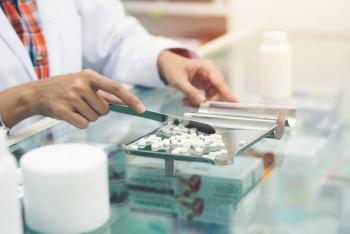
Generics continue to roll up medication markets
Big Pharma is going on an involuntary diet this year.
Key Points
Big Pharma is going on an involuntary diet this year. Over the next 4 years, drugmakers will lose patent exclusivity on products worth more than $140 billion worldwide. The bulk of the loss, $90 billion according to market data provider Datamonitor, will come from the U.S. market. The forecast from competitor IMS Health is just as gloomy. The Danbury, Conn. market research firm projects $102 billion in U.S. patent exclusivity losses by 2018.
Big losers
In 2012, patents expire for Plavix (clopidogrel, Sanofi-Aventis/Bristol-Myers Squibb), Viagra (sildenafil, Pfizer), Seroquel (quetiapine, AstraZeneca), Crestor (rosuvastatin, AstraZeneca), Singulair (montelukast, Merck), and Lexapro (escitalopram, Forest), among others.
First the flood, then the crash
The industry has been marching toward the patent cliff for years at a pace previously ordained by patent law. That's 1 reason for the rush to develop new indications and new formulations for existing molecules. Every new indication and every new delivery mechanism adds to patent protection, extends brand-name profit margins, and delays generic competition. According to Datamonitor, after just 6 months of generic competition, brand sales fall by 72% and brand volume by 70%.
But patents eventually expire, generics flood the market, and prices crash while prescription volume soars. In 2001, Long noted, generics accounted for about half of all prescriptions dispensed in the United States. The generic share is up to 75% today and is expected to hit 86% in 2018. So it should come as no surprise that while branded sales were up a mere 0.7% in 2010, generic sales soared 21.7%. Branded generic sales grew by 4.5%.
It gets worse
The story gets worse for drugmakers. Because research and development have lagged in recent years, relatively few new products have come to market. In 2010, Long noted, there were just 21 global product launches, the lowest count since 1997. And while there are plenty of potential products in phase 1 and phase 2 clinical trials, there are few phase 3 trials and even fewer products in the preregistration phase. That means fewer product approvals over the next few years and fewer brand-name profits to drive sales and earnings.
The future is equally grim for generic manufactures, but they have a few fat years remaining before profit pains set in. There are relatively few major patents for traditional pharmaceuticals coming off market in the years following 2015. That means a drought in new products for generic drugmakers and lower profits even as generic volume continues to grow.
Pick your perspective
"You can look at this in 2 ways," Long said. "One perspective is that this is a very noninnovative market. We are headed toward a drug market that is 86% generic by 2018. If you have a market that is 86% generic, you don't have a lot of innovation going on.
"The other way to look at it is that 86% of all prescriptions dispensed in this country will be generic, with lower copays and lower prices overall. For the consumer and for healthcare payers, this will be a pretty good turn of events."
Newsletter
Pharmacy practice is always changing. Stay ahead of the curve with the Drug Topics newsletter and get the latest drug information, industry trends, and patient care tips.




